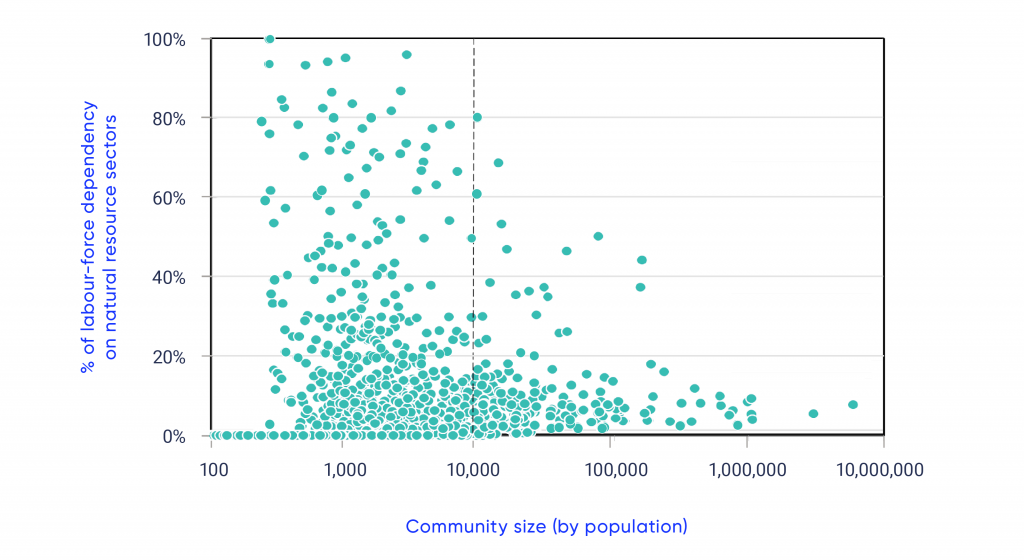Graph showing the distribution of the average labour-force dependency on natural resource sectors, for the period 2001–2016, for communities in Canada with populations ranging from 100 to 10,000,000 people. Labour force dependency is defined as the percentage of labour force income derived from natural resources as a proportion of the total base sector income. Base economic sectors include natural resources (fisheries, agriculture, forestry, minerals, and petroleum and coal), utilities and construction and manufacturing. Each dot in the graph represents a different community in Canada. The vertical dotted line illustrates the population threshold used in this chapter for communities that are considered as being rural and/or remote (e.g., communities with a population of 10,000 or less). The graph shows that the labour force in communities with smaller populations tends to be more dependent on natural resource sectors than in communities with larger populations.
